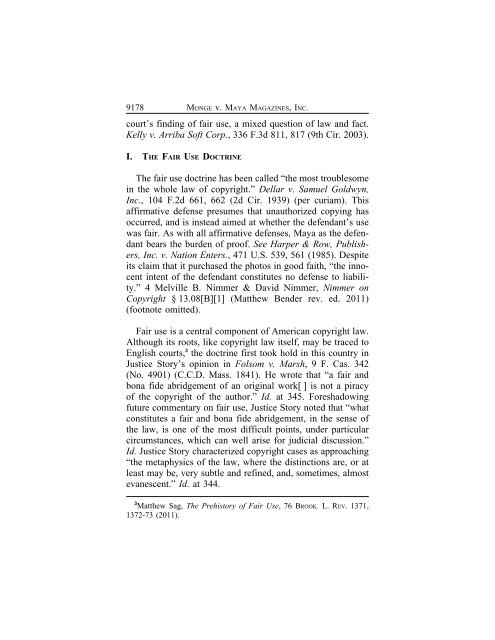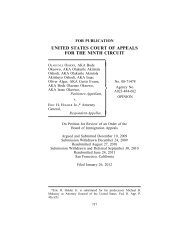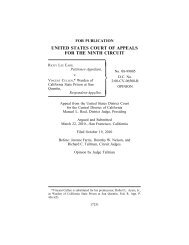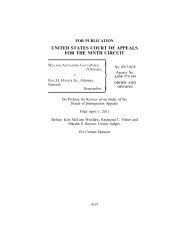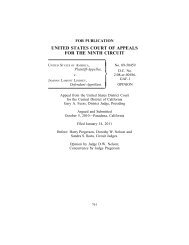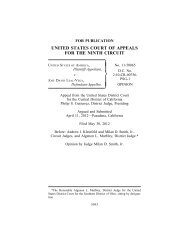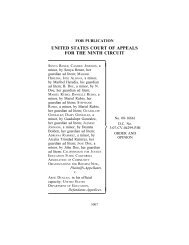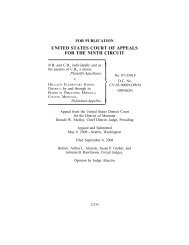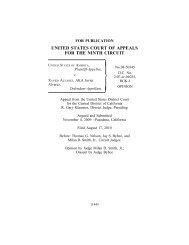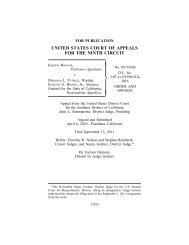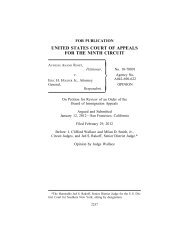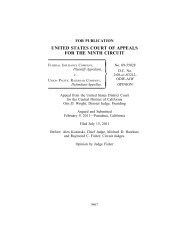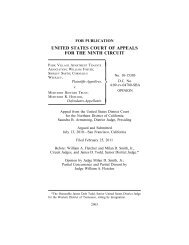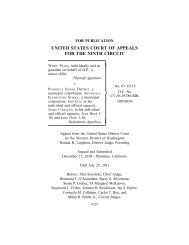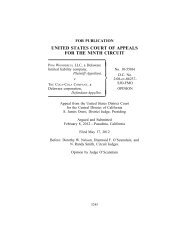NOELIA MONGE V. MAYA MAGAZINES, INC. - Ninth Circuit Court of ...
NOELIA MONGE V. MAYA MAGAZINES, INC. - Ninth Circuit Court of ...
NOELIA MONGE V. MAYA MAGAZINES, INC. - Ninth Circuit Court of ...
Create successful ePaper yourself
Turn your PDF publications into a flip-book with our unique Google optimized e-Paper software.
9178 <strong>MONGE</strong> v. <strong>MAYA</strong> <strong>MAGAZINES</strong>, <strong>INC</strong>.<br />
court’s finding <strong>of</strong> fair use, a mixed question <strong>of</strong> law and fact.<br />
Kelly v. Arriba S<strong>of</strong>t Corp., 336 F.3d 811, 817 (9th Cir. 2003).<br />
I. THE FAIR USE DOCTRINE<br />
The fair use doctrine has been called “the most troublesome<br />
in the whole law <strong>of</strong> copyright.” Dellar v. Samuel Goldwyn,<br />
Inc., 104 F.2d 661, 662 (2d Cir. 1939) (per curiam). This<br />
affirmative defense presumes that unauthorized copying has<br />
occurred, and is instead aimed at whether the defendant’s use<br />
was fair. As with all affirmative defenses, Maya as the defendant<br />
bears the burden <strong>of</strong> pro<strong>of</strong>. See Harper & Row, Publishers,<br />
Inc. v. Nation Enters., 471 U.S. 539, 561 (1985). Despite<br />
its claim that it purchased the photos in good faith, “the innocent<br />
intent <strong>of</strong> the defendant constitutes no defense to liability.”<br />
4 Melville B. Nimmer & David Nimmer, Nimmer on<br />
Copyright § 13.08[B][1] (Matthew Bender rev. ed. 2011)<br />
(footnote omitted).<br />
Fair use is a central component <strong>of</strong> American copyright law.<br />
Although its roots, like copyright law itself, may be traced to<br />
English courts, 3 the doctrine first took hold in this country in<br />
Justice Story’s opinion in Folsom v. Marsh, 9 F. Cas. 342<br />
(No. 4901) (C.C.D. Mass. 1841). He wrote that “a fair and<br />
bona fide abridgement <strong>of</strong> an original work[ ] is not a piracy<br />
<strong>of</strong> the copyright <strong>of</strong> the author.” Id. at 345. Foreshadowing<br />
future commentary on fair use, Justice Story noted that “what<br />
constitutes a fair and bona fide abridgement, in the sense <strong>of</strong><br />
the law, is one <strong>of</strong> the most difficult points, under particular<br />
circumstances, which can well arise for judicial discussion.”<br />
Id. Justice Story characterized copyright cases as approaching<br />
“the metaphysics <strong>of</strong> the law, where the distinctions are, or at<br />
least may be, very subtle and refined, and, sometimes, almost<br />
evanescent.” Id. at 344.<br />
3 Matthew Sag, The Prehistory <strong>of</strong> Fair Use, 76 BROOK. L. REV. 1371,<br />
1372-73 (2011).


